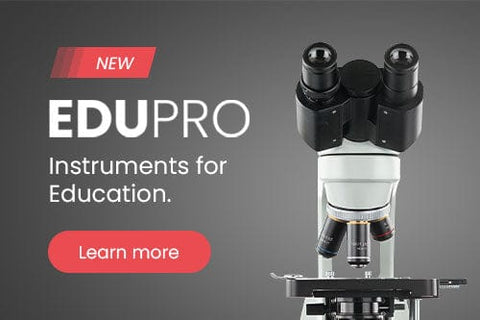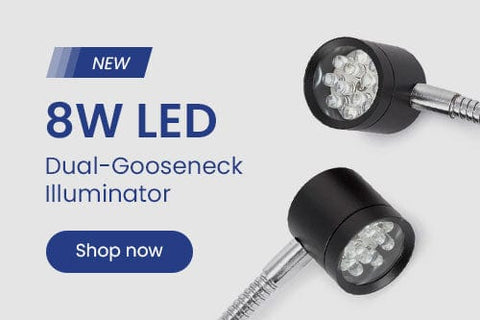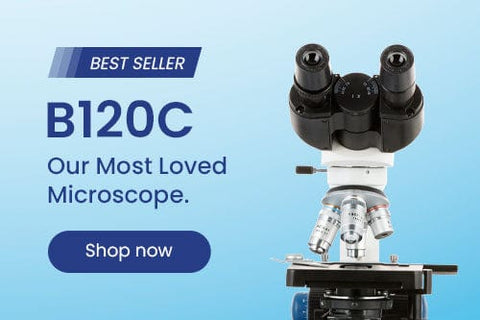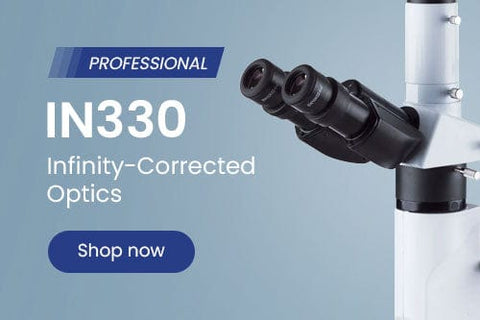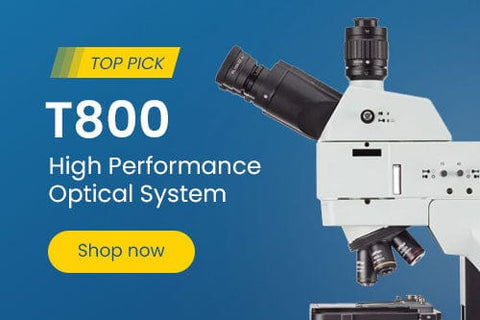- Microscopes
- Cameras
- Lab Supplies & Equipment
- Shop By Brand
- Lab Supplies by Category
- Analyzer Consumables
- Balances
- Bags
- Beakers
- Bench Scale Bases
- Bottles
- Bottletop Burettes
- Bottletop Dispensers
- Boxes
- Blank Microscope Slides & Cover Slips
- Blood Collection
- Caps
- Carboys
- Centrifuges
- Centrifuge Tubes
- Cold Storage
- Containers
- Cryogenic Vials
- Culture Tubes
- Cylinders
- Dispensers
- Digital Dry-Baths
- ESR Products
- False Bottom Tubes
- Flat Bottom
- Funnels
- Gel Documentation
- Glassware
- Glass Test Tubes
- Histology
- Homogenizers
- Hotplates-Stirrers
- Inoculation Loops and Spreaders
- Liquid Handling Products
- Manual-Electronic Pipettors-Pipettes
- Microscope Slides
- Overhead Stirrers
- Pipette Controller (Serological Filller)
- Pipette Tips
- Plastic Test Tubes
- PCR Tubes, Strips & Plates
- Racks
- Repeater Pipettor
- Rockers
- Rotary Evaporators
- Serological Pipettes
- Shakers
- Spectrophotometers
- Syringe Tips
- Sample Tubes
- School/Classroom Supplies
- Screwcap Test Tubes
- Self-Standing
- Test Tube Racks
- Test Tubes & Vials
- Transport & Storage Tubes
- Thermal Mixers
- Transfer Pipets
- Urinalysis
- Vacuum Pumps
- Weighing Dishes
- Lab Equipment
- Balances
- Bench Scale Bases
- Centrifuges
- Digital Dry-Baths
- Gel Documentation
- Homogenizers
- Hotplates-Stirrers
- Overhead Stirrers
- Pipettors
- Rockers
- Rotary Evaporators
- Shakers
- Serological Pipettes
- Spectrophotometers
- Thermal Mixers
- Vacuum Pumps
- Liquid Handling Products
- Manual-Electronic Pipettors-Pipettes
- Pipette Tips
- Racks
- Pipette Fillers-Controllers
- Repeater Pipettor
- Syringe Tips

Cost effective products and solutions designed to improve laboratory efficiency, safety and results.
SHOP BENCHMARK SCIENTIFIC >
- Slides & Accessories
- Slides
- Cameras
- Illuminators
- Adapters
- Eyepieces / Objectives
- Bulbs
- Magnifying Lamps
- Monitors and Tablets
- View All Categories
- Adapters
- DSLR Adapters
- USB Camera Adapters
- Ring Light Adapters
- Power Adapters
- Barlow Lens
- Books & Experiments Cards
- Bags & Cases
- Bags
- Cases
- Cameras
- Circuit Board Holders
- Cleaning Kits
- Condensers
- Darkfield
- Phase Contrast Kits
- Polarizing Kits
- Dust Covers
- Eye-Guards
- Eyepieces
- 20mm
- 23mm
- 30mm
- 30.5mm
- Filters
- Microscope Filters
- Illuminator Filters
- Fluorescence Kits
- Conversion Kits
- Filter Cubes
- Focusing Racks
- Fuses
- Illuminators
- Bulbs
- LED Illuminators
- Fiber Optic Illuminators
- Fluorescent Illuminators
- Ring Lights
- Stand Lights
- Goosenecks
- Gooseneck Attachments
- Immersion Oils
- Loupes
- Magnifying Lamps
- Clamp Lamps
- Desktop Lamps
- Rolling Stand Lamps
- Mechanical Stages
- Monitors and Tablets
- Calibration Slides & Stage Micrometers
- Stage Warmers
- Stain Kits
- Stands
- Articulating Arm Stands
- Boom Stands
- Table Stands
- Tweezers
- Other Accessories
- Shop By Industry
- Shop By Industry
- Botany
- Agronomy & Forestry
- Horticulture
- Phytopathology
- Chemistry
- Biochemistry
- Biotechnology
- Cannabis
- Pharmaceutics
- Consumables
- Beer & Wine
- Cosmetics
- Food & Beverage
- Electronics
- Circuit Boards & General Electronics
- Mobile Phone Repair
- Semiconductors & Wafers
- Environmental
- Asbestos
- Ecosystem Research
- Mud Logging
- Soil Treatment
- Water Treatment
- Forensics
- Ballistics
- Fingerprint Analysis
- Genetic Identification
- Hair & Fiber Analysis
- Handwriting Analysis
- Industrial
- Aerospace
- Automotive
- Dental Lab & Production
- Glass Industry
- Industrial Inspection
- Mechanical Parts
- Paper Industry
- Petrochemical
- Plastics
- Printing Industry
- Quality Assurance & Failure Analysis
- Textiles & Fibers
- Tool Making
- Wood Production
- Jewelry & Gemology
- Engraving
- Gemology
- Jewelry Repair
- Stone Setting
- Watch Repair
- Hobby
- Coins & Collecting
- Stamps
- Modeling & Assembly
- Sculpting
- Repair
- Telescopes
- Metallurgy
- Archaeology
- Geology
- Mining
- Petrology
- Medical & Microbiology
- Anatomopathology
- Bacteriology
- Biochemistry
- Cell Culture
- Cytology
- Dental Microbiology
- Dermatology
- Dissection
- Gout & Rheumatology
- Hair & Fiber Analysis
- Hair Transplant
- Fluorescence
- Hematology & Live Blood Analysis
- Histopathology
- Mycology
- Medical Devices
- Microsurgery
- Neuropathology
- Oncology
- Parasitology
- Pathology
- Semen Analysis
- Virology
- Veterinary & Zoology
- Breeding & Semen Analysis
- Entomology
- Fecal Smears & Floats
- Marine Biology
- Ornithology
- Veterinary Medicine
- Zoology
- Shop By Industry
- Students
- Telescopes
- Buy With Prime
- Sale
- Compound Microscopes
- Shop By Brand
- AmScope
- Euromex
- Omax
- Shop by Head Type
- Binocular
- Monocular
- Trinocular
- Multi-head & Training
- Shop By Specialty
- Brightfield
- Darkfield
- Phase Contrast
- Inverted
- EPIfluorescence
- Polarizing
- Digital Integrated
- Metallurgical
- Shop By Application
- Education
- Research
- Veterinary
- Compound With Digital Head
- Shop Best Sellers
- Shop All Compound
- Stereo Microscopes
- Shop By Brand
- AmScope
- Euromex
- Shop By Objective Type
- Fixed Power
- Zoom Power
- Single Lens
- Common Main Objective
- Shop By Stand Type
- Articulating Arms
- Boom Stands
- Gooseneck Stands
- Table Stands
- Other Stands
- Shop By Head Type
- Binocular
- Monocular
- Trinocular
- Simul-Focal
- Shop By Industry
- Video Inspection
- Industrial Inspection
- Microscope Heads
- Shop Stands
- Articulating Arm
- Boom Stands
- Table Stands
- Stereo With Digital Head
- Shop Best Sellers
- Shop All Stereo
- Specialized Microscopes
- Digital Microscopes
- Kids, Student Microscopes
| AmScope
4 Common Types of Microscope Light Sources
4 Common Types of Microscope Light Sources
Depending on the type of microscope you have, and the most common reasons you use it, you may be presented with a handful of options when looking for a light source. Ambient light from lamps and the sun may have sufficed in the past, but they don’t hold a candle to the range of bulbs and diodes diodes available for microscopy today. When it comes to research, inspection, or educational applications, it’s essential to have illumination appropriate to the task for both viewing and imaging. Below, we’ve assembled a list of four common types of microscope light sources, and the factors to consider before determining which one is right for your work.
1. Incandescent Lamps
Also called tungsten lamps, in reference to the metal used for its wire filament, this type of microscope bulb is comprised of glass, an inert gas and a filament that turns a DC current into light. These thermal radiators are designed similarly to traditional household bulbs, and provide a continuous, reliable source of illumination. Incandescent lamps are the most common type of bulb used in optical microscopes. They are relatively inexpensive and easy to find in many shapes and sizes.
Most optical microscopes have built-in housing to accommodate incandescent bulbs. It’s very important to read the manufacturer’s instructions and only use bulbs with voltage and power ratings that were intended for that particular microscope. If your microscope does not have an internal light source, you can purchase an external source, many of which also use incandescent bulbs. Whether you use an internal or external incandescent lamp, take care to carefully read the instructions on how to replace microscope light bulbs. Tungsten-based lamps can reach very high temperatures and can even cause serious burns if handled inappropriately.
2. Halogen
Technically a subcategory of incandescent bulbs, halogen bulbs use a layer of quartz to protect the glass against higher temperatures and bromine gas to surround the tungsten filament. Bromine absorbs the tungsten as it evaporates from the filament over time, creating a bulb that can operate at a lower wattage and last a lot longer than the typical incandescent light. Both incandescent and halogen lights can be hooked up to dimmer switches to control the amount of illumination. Tungsten-halogen bulbs typically last about twice as long as traditional incandescent bulbs, which is why they sell at a higher price point.
3. Arc Lamp
Arc lamps are lights that produce an electric (also called voltaic) arc between two electrodes, following the same basic principles of lightning. Modern arc lamps rely on mercury or xenon ions to produce white light at a rather high intensity for use in fluorescence microscopes. There are several factors that can lead to instability in these plasma-based light sources, which can cause the light to flutter or flare. With proper use and a reliable power supply, arc lamps can produce the results you’re looking for. However, their quality does visibly deteriorate with age, and they can be sensitive to outside influences such as an unstable power supply or a nearby electromagnetic field.
4. LED
Light emitting diodes (LEDs) are commonly used in widefield fluorescence microscopy. LEDs require relatively little power to operate, are known for their long lives and efficiently turn energy into light without generating much heat. Many microscope LED bulbs can last more than 40,000 light hours, which is remarkable in comparison to incandescent bulbs. They also emit a narrow wavelength range and can run for days at a time without producing enough heat to burn the user. If this all seems a little too good to be true, it’s because LEDs have some downsides when it comes to fluorescence microscopy. The glaring and most common issue is that they are often built into the microscope in such a way that they can only be replaced by factory warranty or repair. The second issue with LEDs is their spectrum. They emit bright white or even bluish light that can interfere with the appearance of certain samples.

When it comes to choosing a microscope light source, your choices are first narrowed down based on the type of microscope you use. From there, you can determine whether longevity, spectrum, accessibility, or stability are your top priorities. Lastly, it all boils down to personal preference and what accessories you feel the most comfortable operating. This list is just the tip of the iceberg. With so many options to explore, you’re bound to find the right illumination that fulfills all your requirements.
Free Shipping on orders $149+
Same day shipping for orders within the contiguous U.S.
Easy Returns
Hassle-free 30-day return policy. 100% satisfaction guarantee.
Quality Products
5-year warranty on AmScope microscopes.
Got a question?
Speak to our team of experts and find the products you need.






